LifeSpan TR800-DT3 Treadmill Desk Review
Like most reviews sites, our editorial staff and laboratory testing expenses are partially offset by earning small commissions (at no cost to you) when you purchase something through those links. Learn More

Overview
| Review Summary |
[Note: it appears that Lifespan has discontinued the TR800-DT3 entirely now. We leave this review live for posterity but refer the reader to the TR1000-DT3, which was the next unit up the line.] |
|---|---|
| MSRP / List Price |
$1,099 |
| Street Price |
Most recently listed at $799 on Amazon
|
| Shipping |
Ships by UPS. We recommend buying this unit through Amazon for faster shipping and possibly better buyer protection. |
| Warranty |
“Extended” warranty coverage must be purchased as an add-on, Lifespan is no longer including the standard factory warranty in the price of the product. $139.99-$299.99 for the TR-800 (not available through Amazon). |
| Controller |
The TR800 is only sold with Lifespan’s “Retro” desktop controller. Membrane keypad type with just the basics: speed, time, distance, step count and calorie burn. While Bluetooth is built in Lifespan advertises it as “No Bluetooth” now, because it never worked. |
| Weight Capacity |
Lifespan used to rate this unit for 300 pounds and unlimited daily usage. In our lab testing, we reported that this user-weight rating must have been made up by the marketing department because the power train was severely underpowered for it. Sure enough, the company has re-rated the TR800-DT3 to a 215-pound max user weight and max duty cycle of three hours of use per day. You’ll be lucky to get three hours at a time before the motor overheats and shuts down. |
| Walking Belt Size |
18″ x 45″ |
| Top Speed |
4.0 mph |
| Dimensions |
Treadmill: 60.5″ L x 26″ W x 6.5″ H |
| Horsepower/RPM |
2 HP High Torque Continuous Duty |
| Noise Level |
50 dB, making this the noisiest treadmill we’ve ever tested. Users report that the motor has a tendency to create high pitch periodic squeals, though this can probably be fixed by routine cleaning. Because of the cheap quality belt it is essential to keep the deck properly lubricated at least every 40 hours. |
| Connectivity Features |
A Bluetooth sync function that’s supposed to work with a laptop running LifeSpan Fitness Club software, but it has never worked and the company stopped advertising it as a feature, even though the button is still on the console. |
| Product Weight |
Treadmill: 96 lbs |
| Power Consumption |
3.05 Amps (200 lb user @ 2 mph) |
| NEAT™ Certified by Mayo Clinic |
No |
| Competition |
Compare to All Top-Rated Office Treadmill Desks
|
| User Reviews | Reviews on Amazon |
| Where to buy |
Buy on LifeSpan Buy on Amazon |
Rating
| Safety | |
|---|---|
| Reliability | |
| Customer Experience | |
| Quality and Aesthetics | |
| Ergonomics | |
| Innovation | |
| Value | |
| Positives | The smallest and least costly of the LifeSpan treadmill options. |
| Negatives | This is a very light duty unit built in China (as opposed to LifeSpan's TR1000, TR1200 and TR5000 that are made in Taiwan), designed for limited home use by a small, lightweight person. The diminutive 18" x 45" walking belt may leave some users, especially men, feeling a bit cramped – and it's much noisier than the other three models. Reliability issues are epic with this unit, even after the company reduced its user weight rating to 215 pounds and its duty cycle to no more than three hours of use per day. Ultimately they removed the warranty coverage from it altogether. |
Bottom Line
[Editors Note: The Lifespan TR800-DT3 (a.k.a. “TR800-Glowup”) has been discontinued. The content below remains published for posterity but is obsolete; please see our separate review of the TR1000, which ostensibly has replaced the TR800 as Lifespan’s bottom-of-the-line unit.]
The Lifespan Fitness Backstory
The founding editors of this website got the gumption to launch WorkWhileWalking (and WorkWhileStanding, which eventually merged into this site) back in 2012, specifically because Lifespan Fitness made a bold entry into the treadmill desk marketplace that finally legitimized it. Prior to their arrival, there were only three options for someone who wanted to have a treadmill desk: a) Steelcase’s insanely overpriced and unreliable Walkstation Treadmill Desk, b) the now-defunct, incredibly poorly-made TreadDesk or Signature Treadmill Desk alternatives to the $5000 Steelcase unit, or c) taking the DIY route by hacking a rehab treadmill into a reasonably reliable, slow-speed treadmill desk.
Lifespan was the first legit player to commercialize the treadmill desk with a reasonably-priced range of products to suit almost every customer type. These included the flagship TR1200-DT3 office treadmill, the lower-cost TR800-DT3 (discontinued and replaced with the newer TR1000-DT3) and the heavy-duty TR5000-DT3 reviewed here, as well as the DT5 and DT7 integrated treadmill desk workstations with their manually and electrically height-adjustable standing desks, respectively. Tens of thousands were sold to corporations, government, education and residential home offices over the past decade. Lifespan treadmill desks would regularly appear in TV shows from The Good Wife to Alpha House.
Lifespan’s foray into active office workstations eventually attracted many competitors into the field (see our round-up review of all the under-desk treadmill bases and all the top-rated treadmill desk systems); most of which, at this stage of the game, have already joined the Dead Pool. Quite a few big brand names in cardio equipment and a few misguided startups chased this shiny object only to find out that building and marketing a good treadmill desk would take a lot more than just removing the large pedestal console and replacing it with a desktop controller to make room for an actual desk. In 2015 iMovR launched the first premium-grade, enterprise-class ThermoTread GT treadmill base, and a wide array of integrated treadmill desk systems build around it such as the Lander Treadmill Desk, giving Lifespan its first real competition. In 2022 iMovR ended production of the ThermoTread GT due to supply chain challenges and partnered instead with another competitor, InMovement, to bring out the iMovR Unsit treadmill base.
Lifespan’s DNA was definitely formed in the crucible of sports equipment development, though, and this really showed in their rather pitiful offerings on the desk side of the treadmill desk combo. When asked, ergonomists shunned all treadmill desks for a long time because the Lifespan DT5 and DT7 rendition were all they’d ever seen at a trade show. Eventually, Lifespan caved and started to offer an ever-changing variety of standing desk alternatives, sourcing commodity-grade options from their factory peers in China and just bundling them with their treadmill bases. The DT5 and DT7 were removed entirely from the Lifespan website at one point, though they appear to have recently returned.
At present, the only desks sold in bundles with the treadmill bases on Lifespan’s website are the generically-named Lifespan Fitness Standing Desk, which we’ve reviewed separately. Like the DT5 and DT7 desks, the new “Power Desk” line that’s based on this desk commits the same original ergonomic sin. Between the user and their keyboard is situated a deep forearm resting cushion with an embedded console for controlling the treadmill. This forces the user into a shoulder-forward posture as they type with their upper body weight resting on their forearms to maintain stability. At least that’s how the company liked to demonstrate it at trade shows and in videos. Lifespan Fitness’ desk offerings have always been incompatible with the installation of ergonomic keyboard trays, especially on the models using the old-school DT5 and DT7 desk bases.

While the company has never had any certificated ergonomists on staff, and always knew vastly more about working out on cardio equipment than they ever did about office workstation ergonomics, the current marketing team understands even less. Shockingly less. Perusing some of their recent social media postings we found numerous publicity shots, like this one here, that curves our spines just looking at them. Here we have a TR800 “Classic” treadmill desk set to a fixed sitting height, with a birch standing desk converter on top of it. For all the hardware in this photo, there is no ergonomic monitor to hold up the display so the user’s neck is craning down, while the model is fake-typing in a completely unergonomic posture. What exactly is the point of putting a converter on top of an adjustable-height desk? More importantly, what is the point of using a treadmill desk in such a way as to create multiple potential ergonomic injuries? What is the point of setting a treadmill desk at sitting height, not walking height? So many questions.
Another tipoff that Lifespan’s marketing team doesn’t know the first thing about office fitness is that they’ve rebranded all their standalone treadmill bases from “-DT3”, e.g. the TR5000-DT3 is now the TR5000-Glowup. But the term “glowup” really gets us, because as we’ve long said, “if you’re sweating while treadmill desking, you’re doing it wrong.”
Lifespan marketing materials often refer to walking at your desk as “a workout” instead of what it’s supposed to be: introducing healthy movement into your sedentary work routine. Sweating at your desk is anathema to the goal of treadmill desking, where you want that extra oxygen going to your brain, not your muscles. If you need some cardio exercise you should get it at the gym, not the office. As many years of Mayo Clinic research has supported, the goal is always to keep your heart rate and metabolic rate in the NEAT Zone. Perhaps this is one reason Lifespan Fitness never sought NEAT Certification; they’ve always left the top-end speed of their under-desk treadmills at 4.0 mph, way higher than the recommended 1-2.5 mph speed most office workers use, in order not to turn away customers who literally wanted to jog at their desks—with all the implied injury risks that entails.
Change of Command
Originally founded by ex-IBM sales account manager Pete Schenk after the dot-com bubble burst in the summer of 2000, the company ran with his hand on the tiller for 19 years. Not the actual manufacturer of any of these products, Salt Lake City, Utah-based Lifespan Fitness (technically, Park City Entertainment) had negotiated the exclusive distribution rights in North America and Europe for gym equipment products, and later treadmill desk and cycle desk products—all manufactured by Strength Master, a mid-tier manufacturer of cardio fitness equipment based in Taiwan and China.
It’s unclear how much ownership control the Taiwanese management team had over Lifespan prior to Schenk’s departure, but contrary to impressions the US-based company liked to put out to the world, the Utah contingent never really had much design input into the products they sold. This led to challenges over time. The company was never really in charge of its own destiny, and only had the management bench strength to be a capable distributor, not an actual technology innovation leader in the industry. The company that is always pushing the technology and ergonomic research on treadmill desks had always been iMovR. (iMovR also partnered with The Mayo Clinic to publish the only solid research on things like How Many Calories Can You Really Expect to Burn Using a Standing Desk or Treadmill Desk?)
Product reliability was always a concern because the Taiwanese factory wanted to make one treadmill base for both cardio fitness and office workstation applications. In fact, the service manuals for the office treadmills and running treadmills (e.g. TR1200 and the TR1200i) are exactly the same. This instigated a fundamental conflict as to where to set the gearing ratios on the motor-flywheel-pulley-head roller power transmission system. The consequence of this is that the office treadmills have never had sufficient torque at low speeds, like the 1-2 mph speed that most workstation users are walking at. This led to a shortened useful life span for the costly motor, and mounting warranty claims over the years. (We get into all the nerdy details on this issue in our primer on Do Treadmill Desk Weight Ratings Really Matter? if you want to learn more.)
From interviews with Lifespan executives over the years we learned that the company was never really on very solid financial footing. The tariffs imposed on China only affected some of the products that Strength Master made in their Chinese factory. But the pandemic, sadly, appears to have dealt a rather significant body blow to the company. In March of 2019, insiders tell us that Schenk simply “walked away from the company,” purportedly after some internal scandal over nepotism. Clearly, the Taiwanese are in charge of Lifespan Fitness today, with the daughter of Strength Master’s CEO moving to Utah to oversee the operation as its new CEO. In 2019, we learned from a wave of departing employees that they were told by the company that they were all being summarily laid off, without warning, “due to covid.”
Ever since Schenk’s departure, the company’s reputation has taken a bit of a hit, sad to say. Many product descriptions, detail photos and specifications have been dumbed down, well-hidden or completely removed from the website. It’s sometimes hard to get a human on the phone. Lucy the live chatbot is badly programmed and doesn’t know how to answer a single question about the treadmill desk products, only classroom products and gym equipment. We’ve read numerous user complaints on various networks like the BBB about customers not getting any kind of response on warranty claims and other issues. Places, that is, where Lifespan couldn’t scrub out most of the bad reviews (to be fair, most manufacturers do the same). Despite assurances to the contrary from the new management, Lifespan Fitness doesn’t feel like the same company we knew so well in the formative years of the treadmill desk industry.
Onto the review of the TR800-DT3 / TR800-Glowup….
For the Lilliputians
Of the four TR Series treadmill bases from Lifespan – the others being the TR1200 (most popular), TR1000 (downsized TR1200) and TR5000 (the reliable, overbuilt one) – the TR800 is definitely the smallest and the weakest. It’s not overly harsh to say it is the runt of the pack, because it was never built to be used by anyone but the slightest of users. The motor has always been underpowered and the belt is so narrow and short as to be uncomfortably cramped for taller users and those with a wider stride, especially men.
The best thing we can still say about the TR800 is that even though it no longer has a “buy” rating from our staff, it did survive the competition wars against other contenders in the small footprint under-desk treadmill category and in the budget category, with TreadDesk, UnSit, RebelDesk, the Exerpeutic Workfit 2000 and others all now in the Dead Pool.
Given the way things are going for the TR800 however, now garnering more 1-star reviews than any other rating on Amazon, we suspect it’ll be the next model, if not the next company also headed that way. When you stop including a warranty with your product, and become very hard for customers to reach when warranty service is required, it’s usually the beginning of the end.
As far as the TR800 specifically is concerned, what the free market eventually revealed is what our review staff has been writing about for over a decade, that pulling a dead weight across a treadmill deck at 1-2 mph requires far more low-speed torque from a motor than when a runner is kicking the belt in the same direction the motor is turning. The force required to overcome the friction between the belt and the deck is immense, and running treadmills just aren’t geared for it. The result is always the same: premature motor failure or controller board failure. In other words, a user planning to walk at 1-2 mph should also plan to spend substantially more on a stronger motor and drive train than they would on a cardio treadmill, if they want it to last. We go into the engineering reasons behind this in our primer on treadmill powertrains.
Lifespan has long been one of those treadmill manufacturers that lie about their weight ratings. There are no industry standards to speak of, so weight ratings are often what the manufacturers’ marketing departments conjure up, which is something we’ve always focused on proving in actual lab testing when we’ve reviewed these units. Rare is the company like iMovR that conducts both finite element analysis (FEA) on the design of their treadmills and months-long independent testing using specialized equipment and has an in-the-field record spanning many years longer than its warranty term to back up its claims.
LifeSpan differentiates its three models by weight rating and recommended number of hours of daily use. On their own website the TR800 Glowup is rated for 215 pounds and three hours of daily use (on Amazon it’s rated for 200 pounds and no duty cycle limitation is mentioned); the TR1200 is rated for 350 pounds and six hours of daily use, and the TR5000 for 400 pounds and 10 hours of daily use. For years, Lifespan had a 300-pound user rating on the TR800, which we always took issue with. Given the narrower 18″ belt, we couldn’t even imagine any 300-pound person using the TR800 comfortably. In our opinion, the TR800 wouldn’t be comfortable for anyone over 200 pounds, regardless of the machine’s weight rating, because of the narrow deck.
The “hours of daily use” rating has little bearing on reality. In the real world one must account BOTH for the weight of the user(s) and the frequency of preventive maintenance. If a 175-pound user bought a TR800 and never lubricated the deck it would eventually fail. On the other hand, a 300-pound user who routinely sprays a little silicone oil between the deck and belt to keep their TR1200 well-lubed is going to have something that will last for many years. Better to treat the daily hour limit as a guideline rather than as a rule, though obvious differences in construction suggest the TR1200 for longer-duration usage than its little brother.
Rigidly speaking
Frame rigidity is paramount in a treadmill. Excess flex in the frame can lead to early degradation of the walking deck, further leading to an increase in friction, noise and power consumption. If allowed to go on for long enough, total motor and/or controller failure can ensue.
The original TR800’s frame weighed 120 pounds, compared (at the time) to the TR1200’s 131-pound frame. In comparison, both the TreadDesk’s lightweight 101-pound frame and Rebel’s featherweight 88-pound frame were more cheaply made. Frame flex and creaking were problems we noted while lab testing both units; both TreadDesk and RebelDesk are out of business now.
So what does LifeSpan do? A few years ago they did some cost engineering to increase the profit margins on the TR800-DT3. Most companies would come out with a new model number if they were making truly radical changes to a product. Lifespan chose instead to just shed 24 pounds of metal out of the TR800 without telling anybody. At a measly 96 pounds of frame weight now the TR800 has fallen subject to the same problems that the Rebel 1000 treadmill did, it is a highly flexible frame that leads to massive issues with belt drift and assorted noise and reliability issues.
Is that a treadmill I hear?
A good walking treadmill base will be so quiet that the people around you will only hear your footsteps, not the motor or the belt scraping along the deck.
One of the biggest differences we’ve experienced between LifeSpan’s treadmill bases, is the distinct noise signatures of the three models. The TR5000 is significantly louder than the two smaller units due to its built-in continuous cooling fan required for the AC motor’s controller. Both the TR1200 and TR5000 feature extra-thick, long-lived, 2-ply belts. The TR800’s belt is very thin in comparison, and is the same grade as the one used in the Rebel Desk 1000. It’s only a couple of decibels louder than its brethren, but remember that’s a logarithmic scale. Consumers comparing the three units will definitely notice the difference. The surface of the belt is also grittier, and more susceptible to footprints being left behind, compared to the smoother rubber belt surface on the two nicer models.
Some users also reported that dirt accumulated inside the motor housing on the TR800 treadmills, leading to all sorts of funky sounds coming from the motor area. In some cases they found that removing the cover and thoroughly cleaning out the pulley belt mechanism cleared these squeaky noises that occurred with every rotation of the flywheel. The question is why did dust and dirt collect in there in the first place? In their aim to reduce costs it appears Lifespan engineers left out some dirt shields that higher quality treadmills have on the bottom of the unit. To combat this you can always invest in a good under-treadmill anti-static mat, by the way. Static build-up in the treadmill attracts dust bunnies inside if there’s no shielding.
Adequate desktop console

All four LifeSpan models share the same rudimentary desktop console device – what Lifespan has rebranded the “Retro” controller – although the newer breed of TR1200 and TR5000 treadmills now have the option of the new “OmniHub” desktop controller for $100 more. They’re well-weighted and perform all the functions you’d expect from a basic office treadmill. You’ve got your basic distance, time, speed, calories burned, and steps taken readouts, and they even have a convenient USB charging port for your cell phone.
While there is a Bluetooth Sync button on the Retro controller for uploading your stats into the LifeSpan Fitness Club Software, it has never worked and Lifespan started explicitly saying “No Bluetooth” in its Amazon listings because of all the complaints it used to get. To get Bluetooth that sort of maybe works you have to buy the OmniHub controller, which isn’t available on the cheaper TR800 and TR1000 units.
In Conclusion
In this price range, there’s nothing else available in the treadmill desk market anymore what with so many competitors going out of business, but it’s not for most people. Per the qualifying conditions noted above, we believe most people would benefit greatly from upgrading to a “real” under-desk treadmill base with the proper horsepower, belt size, warranty and support for the application. Given all the systemic issues with Lifespan as a company right now we can no longer endorse their products, but if you do still choose to buy one of their treadmill desks definitely avoid the TR800. You’ll probably want to buy through Amazon for the better consumer protection, but that’ll only last you 30 days. Make sure Lifespan will sell you a warranty plan, because it doesn’t come with one anymore, whether you buy it on their site or through Amazon.
Recommended Accessories for Treadmill Deskers
It’s worth mentioning that iMovR’s EcoLast TreadTop Standing Mat is a must-consider add-on accessory for any office treadmill. When you want to take a pause from walking the last thing you want to do is stand on the cushion-less hard deck of a treadmill for very long, lest your feet start to suffer. These TreadTop mats are premium-quality, 100% polyurethane standing mats that are shaped specifically to fit the 20″-wide belt tracks of the most popular office treadmill models. They can be used atop the desk or astride the treadmill if you have a sit-stand-walk workstation, or both.
LifeSpan offers their own lubricant, and recommends applying it to the deck after every 40 hours of use. However, we recommend the iMovR Treadmill Lubricant (100 percent Silicone) for its superior formulation and ease of application. See our primer on How to Lubricate A Treadmill for easy video instructions on how to keep any treadmill in tip-top running condition.
To protect your floors and your equipment, and reduce noise, static and vibration, an under-treadmill equipment mat is a great investment to consider as well. You’ll also want to check out reviews of the most stable monitor arms for treadmill desks to address one of the most important concerns of working at an active workstation, proper monitor height for avoiding next strain.

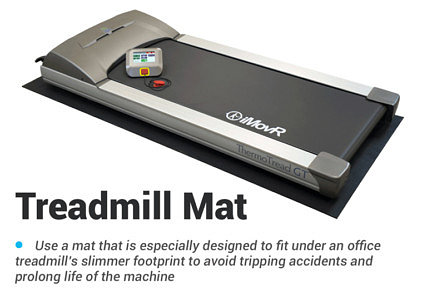

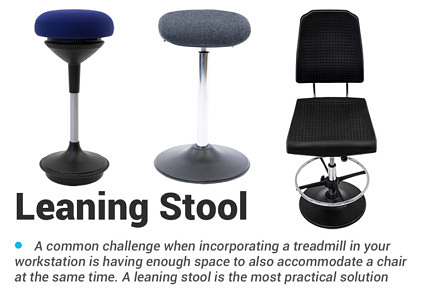
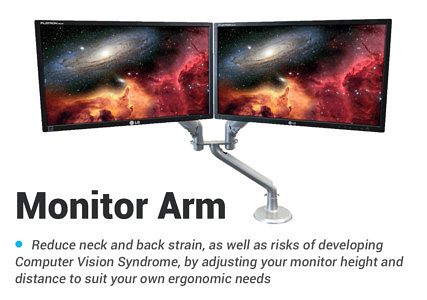
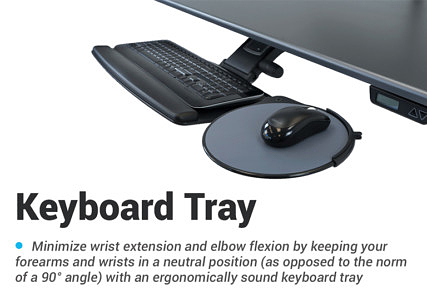
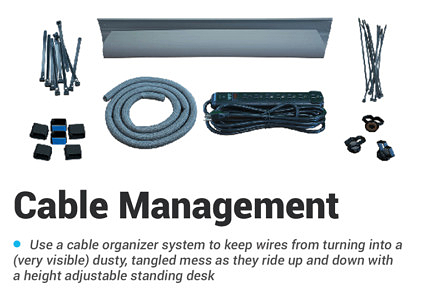
3 Comments
Leave a response >